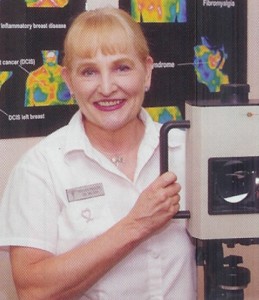Medical Thermography
 Thermography – Infrared Thermal Imaging – Integrated Health Solutions
Thermography – Infrared Thermal Imaging – Integrated Health Solutions
Medical Thermography incorporates infrared thermal imaging results with clinical history, lab, test, and study information and analyzes the information into a summary of potential disease concerns, need for further study, and provides support suggestions. Medical Thermography involves medical physician thermal imaging interpretation and medical provider evaluation of all results. All results are sent to the client’s primary care provider for incorporation into their overall plan of care. Visit IHS by clicking the ACCT logo to the left.
Medical Thermography incorporates the technology of infrared thermal body imaging
Thermal imaging is based on body heat that is normally radiating from skin. The thermal camera is able to “receive” the heat that is coming from the skin, and through very sophisticated sensing devices, translate the heat into a body image using computerized software. The resulting body image shows physiologic function not anatomic structure. Physiologic function is determined by blood flow to various parts of the body. Increased blood flow is called “hyperthermia” (too much heat). Hyperthermia can be related to inflammation, hormone imbalance, pain, extra blood vessels (such as those created by cancer cells), parasites, etc.). Decreased blood flow is called “hypothermia” (too little heat). Hypothermia can be related to an abnormal reduction in blood flow (such as in blocked heart vessels, or blood clot formation), or a reduction in nerve conduction to a body part (i.e. nerve damage, abnormal nerve function).
Service provided: Thermography imaging of Breast, Upper-Body, Full-Body or specific Region of Interest.

